Everything Homeowners Need To Know About Lead Pipes: The Hidden Risks Of Older Homes
Welcome to our comprehensive guide that uncovers the secrets and risks hidden within the plumbing systems of older homes.
As a trusted plumbing company, we understand the paramount importance of protecting your family’s health and well-being.
In this blog post, we delve deep into the world of lead pipes, shedding light on their hidden dangers and implications for homeowners. From understanding the origins and prevalence of lead pipes to the potential health risks they pose, we leave no stone unturned.
Join us as we navigate the labyrinth of knowledge and equip you with the essential information needed to safeguard your loved ones. Discover the steps you can take to detect, address, and mitigate the risks associated with lead pipes in older homes.
Let’s embark on this journey together, empowering you to make informed decisions and ensure a safe living environment for your family.
If you’re here because you want a plumbing company to replace lead pipes, click here!
What Are Lead Pipes and Why Are They a Concern for Your Home?
Lead pipes, once prevalent in older homes, pose a significant concern for homeowners due to the potential health risks they carry.
Lead pipes are plumbing pipes made of lead or those joined with lead-based solder. This toxic metal can leach into your drinking water, posing health hazards, especially for children and pregnant women.
The ingestion of lead-contaminated water can lead to developmental issues, learning disabilities, and other serious health complications. As an expert in residential plumbing, we know it is crucial to address the presence of lead pipes in your home promptly.
By understanding the risks and taking necessary measures, you can ensure a safe and healthy living environment for you and your family.
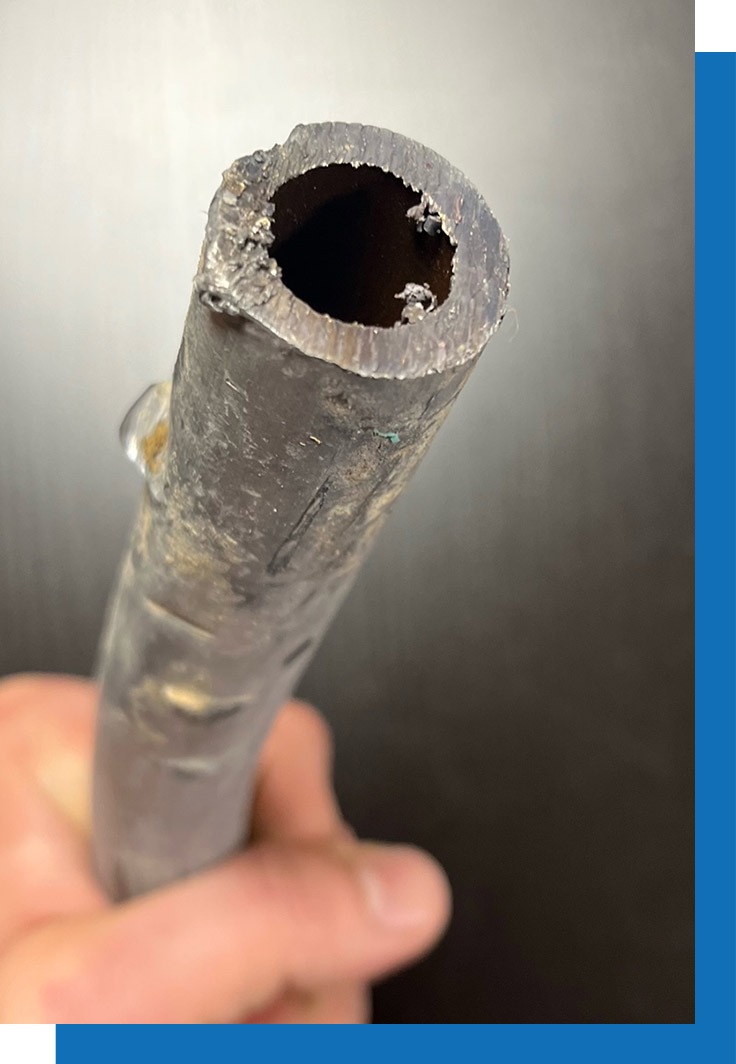
How Can Lead Pipes Affect Your Family's Health and Safety?
Lead pipes can have detrimental effects on the health and safety of your family. As an expert in plumbing, I want to ensure that you understand the potential risks associated with lead pipes.
Here are the ways lead pipes can impact your family’s well-being:
To protect your family from these risks, it is essential to identify if your home has lead pipes and take appropriate measures to address the issue promptly. By replacing lead pipes and ensuring a safe water supply, you can safeguard your family’s health and promote their overall well-being.
When Were Lead Pipes An Acceptable and Common Building Material?
Lead pipes were commonly used as a home construction material in Canada during the early to mid-20th century. They were prevalent in residential plumbing systems, particularly from the late 1800s to the mid-1950s. Homes constructed during this period, especially those built before the 1950s, are more likely to have lead pipes or plumbing fixtures that contain lead.
The use of lead pipes declined over time as the health risks associated with lead exposure became better understood. Recognizing the dangers of lead in drinking water, regulations and guidelines were established to discourage the use of lead pipes and promote the adoption of safer alternatives.
It’s important to note that the specific timeline of lead pipe usage can vary depending on factors such as the region, local building practices, and individual home construction projects. As a homeowner, if you suspect your home may have lead pipes, it is advisable to consult with a licensed plumber or conduct water testing to determine the presence of lead and take appropriate measures to ensure a safe water supply.

How to Identify if Your Home Has Lead Pipes: Signs and Symptoms
As an expert in residential plumbing services, I understand the importance of identifying whether your home has lead pipes. Detecting the presence of lead pipes is crucial for ensuring the safety of your water supply.
Here are some signs and symptoms to help you determine if your home may have lead pipes:
Remember, if you suspect or confirm the presence of lead pipes in your home, taking action is crucial to protect your family’s health. Consulting with a professional plumber can provide you with expert guidance and solutions to address lead pipes and ensure a safe water supply for your household.
What Are the Legal Regulations and Standards Surrounding Lead Pipes?
As an expert residential plumber, I can provide you with information regarding the legal regulations and standards surrounding lead pipes in Ontario.
It’s important to stay informed about these regulations to ensure compliance and the safety of your home’s water supply.
Here are some key points to consider:
- Ontario Building Code: The Ontario Building Code sets forth regulations for construction and renovation projects in the province. It provides guidelines for plumbing systems, including restrictions on the use of lead pipes and fixtures.
- Safe Drinking Water Act: The Safe Drinking Water Act is designed to protect public health by ensuring the safety of drinking water in Ontario. Under this act, the Ministry of the Environment, Conservation and Parks establishes regulations and standards for drinking water quality, including limits on lead concentrations.
- Ontario Regulation 170/03: This regulation, under the Safe Drinking Water Act, outlines specific requirements for lead sampling, testing, and reporting in drinking water systems. It establishes the maximum allowable concentration (MAC) for lead in drinking water, which is currently set at 5 parts per billion (ppb).
- Municipal Bylaws and Programs: Some municipalities in Ontario may have additional bylaws or programs in place to address lead pipes. These may include requirements for lead pipe replacement or financial assistance programs to support homeowners in replacing lead pipes.
It’s essential to consult with local authorities, such as municipal governments or licensed plumbers, to ensure you are up to date with the specific regulations and standards in your area. Professional plumbers experienced in Ontario’s plumbing regulations can guide you through the process of complying with legal requirements and help you assess and address any lead pipe concerns in your home.
The Hidden Risks of Lead Pipes: Understanding the Long-Term Consequences
As your trusted local plumber, I want to shed light on the hidden risks associated with lead pipes and the potential long-term consequences for your health and well-being. While lead pipes were once commonly used in plumbing systems, we now understand the severe impact they can have over time.
Here are the key factors to consider:
Health Implications: Prolonged exposure to lead-contaminated water can have serious health implications. Lead is a toxic metal that, when ingested, can accumulate in the body over time. It can cause damage to various organs, including the brain, kidneys, and nervous system. Children and pregnant women are particularly vulnerable to the harmful effects of lead exposure.
Developmental Issues: Lead exposure in children can lead to developmental delays, learning disabilities, and behavior problems. It can hinder cognitive function, affecting their ability to learn, concentrate, and achieve their full potential.
Long-Term Effects: The consequences of lead exposure are not limited to childhood. Adults exposed to lead over an extended period may experience cardiovascular issues, kidney damage, reproductive problems, and increased risk of high blood pressure.
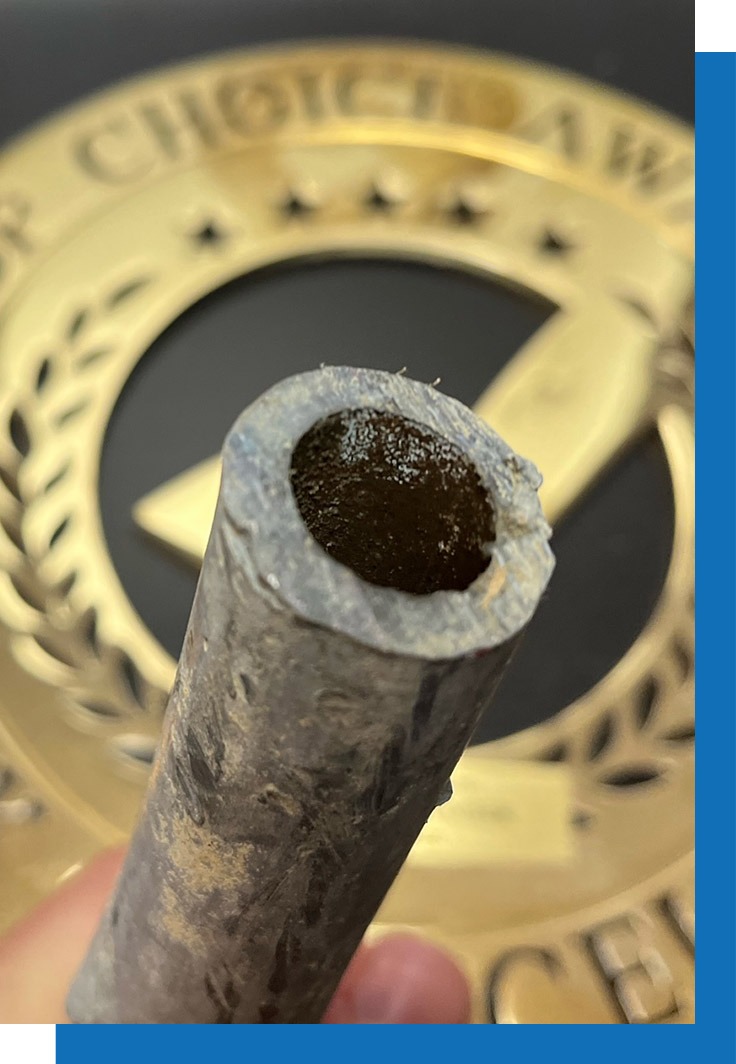
Water Quality Concerns: Lead pipes can corrode over time, releasing lead particles into the water supply. Even low levels of lead can be harmful, as there is no safe threshold for lead exposure.
Legal and Environmental Considerations: There are legal regulations in place to limit lead exposure in drinking water, including maximum allowable concentration (MAC) standards. Furthermore, from an environmental standpoint, lead pipes contribute to the pollution of water sources and have adverse effects on ecosystems.
Understanding the long-term consequences of lead pipes is crucial for protecting your health and the well-being of your family. If you suspect or have confirmed the presence of lead pipes in your home, it is essential to take immediate action to address the issue. Consulting with a professional plumber and considering lead pipe replacement can help mitigate the risks and ensure a safe and healthy water supply for years to come.
Is Your Drinking Water Safe? Testing for Lead Contamination in Your Pipes
Water testing for lead contamination is a crucial step in identifying potential risks and taking appropriate measures to protect your health and the well-being of your loved ones.
Here’s what you need to know about testing for lead contamination in your pipes:
Regularly testing your drinking water for lead contamination is essential, especially in older homes or areas with known lead pipe issues. By taking proactive steps to ensure a safe water supply, you can have peace of mind and safeguard the health of your family.
The Importance of Prompt Action: Why Should You Consider Replacing Lead Pipes?
As a licensed and insured plumber, I cannot emphasize enough the criticality of promptly addressing the issue of lead pipes in your home. The potential risks and health hazards associated with lead exposure make replacing lead pipes a matter of utmost importance.
Here’s why you should consider taking swift action:
Protecting Your Health: Lead is a toxic metal that can have severe health consequences, particularly for children and pregnant women. Lead exposure has been linked to developmental issues, learning disabilities, and behavioral problems. By replacing lead pipes, you eliminate a significant source of potential lead contamination in your drinking water, safeguarding your family’s health and well-being.
Compliance with Regulations: Various regulations and standards govern plumbing systems to ensure safe drinking water. Many jurisdictions have restrictions on the use of lead pipes due to their known health risks. By replacing lead pipes, you align your home with these legal requirements, avoiding potential penalties and ensuring compliance.
Preserving Water Quality: Over time, lead pipes can corrode and leach lead particles into the water supply. Even low levels of lead can have detrimental effects. By replacing lead pipes, you improve the overall quality of your drinking water, providing a clean and safe supply for your family.
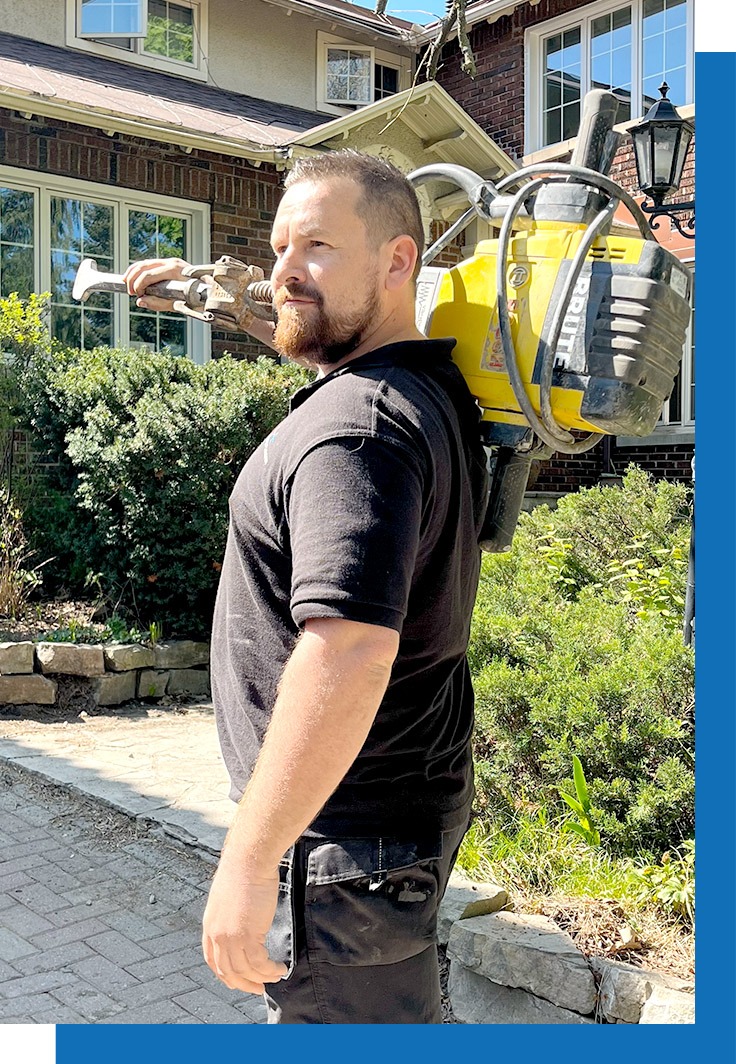
Increasing Property Value: Upgrading your plumbing system by replacing lead pipes adds value to your home. Prospective buyers are often wary of properties with lead pipes, as they understand the associated health risks. By proactively addressing this issue, you enhance the marketability and attractiveness of your home when the time comes to sell.
Long-Term Cost Savings: While lead pipe replacement may involve upfront costs, it is an investment in your family’s health and future. By preventing potential health complications and avoiding the need for costly remediation measures down the line, you can actually save money in the long run.
Don’t delay in taking action to replace lead pipes. Consult with a professional plumber who specializes in lead pipe replacement to assess your plumbing system, develop a comprehensive plan, and ensure a smooth and efficient transition to a safer and healthier water supply. Your family’s well-being is worth the proactive steps taken today.
Exploring Safe Alternatives: Materials for Modernizing Your Plumbing System
When it comes to modernizing your plumbing system and eliminating the risks associated with lead pipes, there are safe alternatives available that can provide peace of mind and a healthier water supply. As an expert in plumbing, I want to introduce you to some of these alternative materials that you can consider for upgrading your plumbing system:
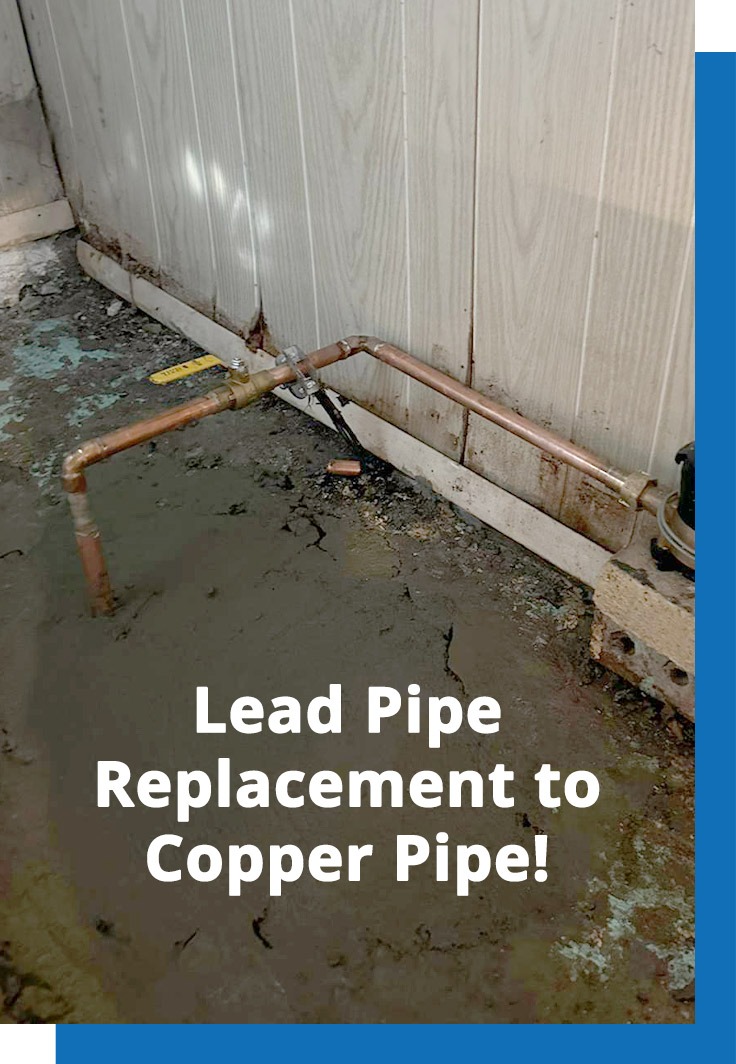
Copper Pipes: Copper pipes have been widely used in plumbing for their durability, longevity, and resistance to corrosion. They are a popular choice for replacing lead pipes due to their excellent water quality and compatibility with various plumbing applications.
PEX Pipes: Cross-linked polyethylene (PEX) pipes have gained popularity in recent years. They are flexible, easy to install, and resistant to corrosion and freezing. PEX pipes are a cost-effective and reliable option for modernizing your plumbing system, providing long-lasting performance and maintaining water quality.
PVC Pipes: Polyvinyl chloride (PVC) pipes are commonly used for drainage and waste systems, but they can also be utilized for cold-water supply lines. PVC pipes are affordable, lightweight, and resistant to corrosion, making them a suitable choice for certain applications within your plumbing system.
PVC Pipes: Polyvinyl chloride (PVC) pipes are commonly used for drainage and waste systems, but they can also be utilized for cold-water supply lines. PVC pipes are affordable, lightweight, and resistant to corrosion, making them a suitable choice for certain applications within your plumbing system.
Stainless Steel Pipes: If you prefer a metal alternative to copper, stainless steel pipes offer excellent durability and corrosion resistance. They are suitable for both water supply lines and drainage systems, ensuring clean and safe water flow throughout your home.
CPVC Pipes: Chlorinated polyvinyl chloride (CPVC) pipes are designed specifically for hot water applications. They are durable, heat-resistant, and provide enhanced chemical resistance compared to standard PVC pipes. CPVC pipes can be a suitable choice for replacing lead pipes in hot water lines.
When considering alternatives, it is crucial to consult with a professional plumber who can assess your specific plumbing needs and recommend the most suitable materials for your home. They will ensure proper installation and compliance with local plumbing codes, ensuring a seamless transition to a modernized and lead-free plumbing system.
By exploring these safe alternatives, you can upgrade your plumbing system and bid farewell to the risks associated with lead pipes. Invest in the health and safety of your family by embracing modern materials that provide clean water, durability, and peace of mind for years to come.
Lead Pipe Replacement: Process, Costs, and Considerations for Homeowners
Replacing lead pipes in your home is a crucial step towards ensuring a safe and healthy water supply for your family. As a trusted plumber in Ottawa, I want to guide you through the process, costs, and important considerations associated with lead pipe replacement. Let’s delve into the details:
Remember, lead pipe replacement is not just an essential step for your family’s health; it is a proactive measure to comply with regulations and protect your property value. Work closely with a professional plumber to navigate the process, address your concerns, and achieve a successful lead pipe replacement, providing a safer water supply for years to come.
When Did They Stop Using Lead Pipes?
The use of lead pipes has significantly diminished over time due to the recognized health risks associated with lead exposure. The timeline for when lead pipes stopped being used can vary depending on factors such as location, specific regulations, and individual construction practices.
Here are some general points to consider:
Ultimately, the shift away from using lead pipes has been driven by a growing understanding of the health risks associated with lead exposure, advancements in plumbing technology, and updated regulations aimed at safeguarding public health and ensuring access to clean and safe drinking water.
Is there lead in Ottawa's drinking water supply?
In general, Canadian municipalities, including Ottawa, implement measures to monitor and maintain the quality of drinking water supplies. Ottawa has a comprehensive water quality management program to ensure the safety and reliability of its drinking water.
Lead can potentially enter the drinking water supply through older service lines or plumbing fixtures that contain lead. To address this concern, Ottawa and other municipalities have implemented strategies to reduce lead exposure in drinking water, including corrosion control measures and public education campaigns.
It is essential to stay updated with the most recent information regarding Ottawa’s water quality. The City of Ottawa’s website or local water authorities can provide current reports and information on the presence of lead in the drinking water supply. They may also offer guidance on steps you can take to minimize lead exposure, such as flushing taps before using the water and considering lead testing and water treatment options.
For the most accurate and up-to-date information about lead levels in Ottawa’s drinking water supply, I recommend contacting the City of Ottawa or relevant local water authorities.
Is there assistance available to replace a lead water service pipe in Ottawa?
Yes, there are assistance programs available in Ottawa to support homeowners with lead water service pipe replacement. The City of Ottawa has recognized the importance of addressing lead pipe issues and offers financial assistance programs to help homeowners with the costs associated with lead water service pipe replacement.
One such program in Ottawa is the Lead Pipe Replacement Program. Eligible property owners may qualify for financial assistance to offset a portion of the costs incurred during the replacement process. The program aims to promote the replacement of lead water service pipes to improve water quality and reduce lead exposure risks.
To obtain detailed information about eligibility criteria, application procedures, and the level of financial assistance provided, I recommend visiting the official website of the City of Ottawa or contacting their Water Services Department directly. They will provide you with the most up-to-date information regarding assistance programs available for lead water service pipe replacement in Ottawa.
Who is responsible for replacing water service pipes?
In Ottawa, the responsibility for replacing water service pipes typically depends on the location of the pipes and the point at which they transition from public to private property. Here are some key points regarding the responsibility for water service pipe replacement in Ottawa:
City’s Responsibility: The City of Ottawa is generally responsible for the portion of the water service pipe that extends from the water main to the property line, which is often referred to as the “city’s portion.” This section of the water service pipe falls under the jurisdiction and maintenance of the city.
Property Owner’s Responsibility: The property owner is typically responsible for the portion of the water service pipe that extends from the property line to the building, commonly known as the “private portion.” This section of the water service pipe, along with any plumbing fixtures within the property, is the responsibility of the property owner.
Lead Water Service Pipe Replacement: In the case of lead water service pipe replacement, the City of Ottawa has recognized the importance of addressing lead exposure risks and offers financial assistance programs to support property owners with the costs of replacing the private portion of the lead water service pipe. One such program is the lead pipe replacement program.
It’s important to note that specific responsibilities may vary depending on local regulations and circumstances. It is advisable to contact the City of Ottawa’s Water Services Department or consult with a licensed plumber to determine the exact responsibility and process for water service pipe replacement in your specific situation.
By reaching out to the appropriate authorities and professionals, you can obtain accurate and up-to-date information regarding the responsibilities and requirements for replacing water service pipes in Ottawa.
Applying For Lead Pipe Replacement Program in Ottawa
When applying for the lead pipe replacement program in Ottawa, you can take the following steps to initiate the process:
Contact the City of Ottawa: Reach out to the City of Ottawa’s Water Services Department or visit their official website to obtain information about lead pipeline replacement programs and initiatives. They can provide details about the application process, eligibility criteria, and any required documentation.
Determine Eligibility: Review the eligibility requirements for lead pipeline replacement programs in Ottawa. These criteria may include factors such as property ownership, the presence of lead pipes, and specific financial thresholds.
Gather Required Documentation: Prepare the necessary documentation for the application process. This may include proof of ownership, identification, property information, and any supporting documentation required by the specific program.
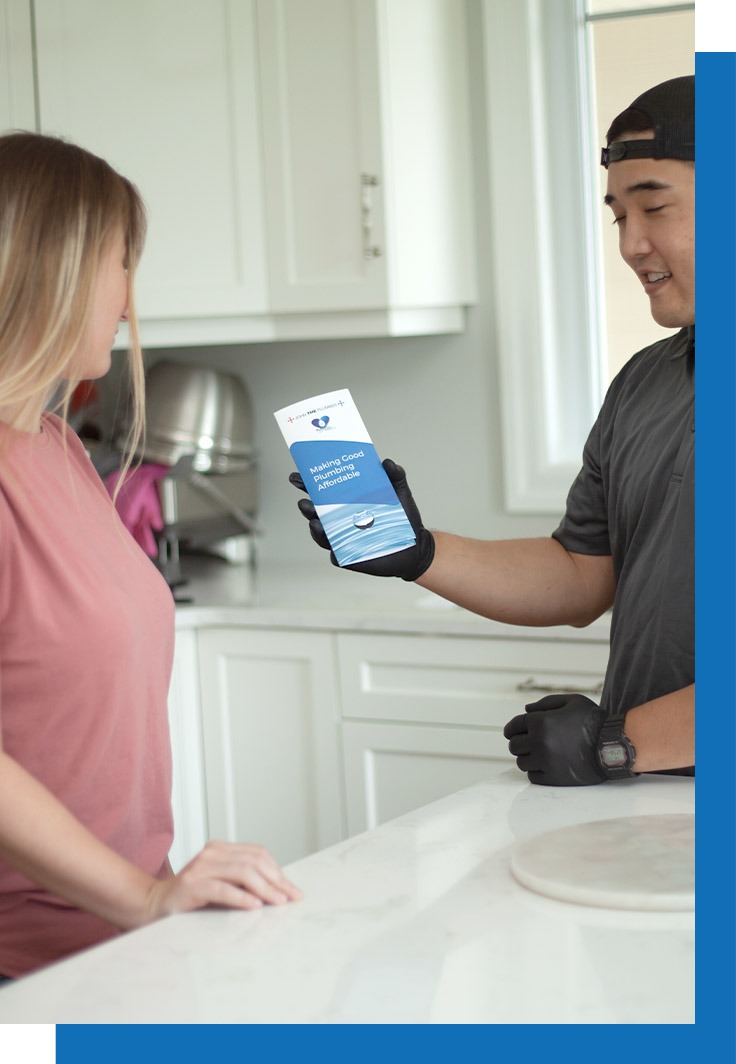
Submit an Application: Complete the application form provided by the City of Ottawa. Ensure that all required information is accurately filled out and attach the necessary documentation. Follow the instructions provided by the program to submit your application.
Await Evaluation and Approval: After submitting your application, it will be evaluated by the appropriate authorities. The evaluation process may involve verifying eligibility, reviewing documentation, and assessing the scope of the lead pipeline replacement required.
Notification of Approval and Assistance: If your application is approved, you will receive notification from the City of Ottawa. They will provide details about the level of financial assistance offered and any additional steps or requirements to proceed with the lead pipeline replacement.
It’s important to note that the specific process and requirements may vary depending on the lead pipeline replacement program in Ottawa. To obtain the most accurate and up-to-date information, contact the City of Ottawa’s Water Services Department directly or visit their official website for the lead pipeline replacement program you are interested in.
By following these steps and collaborating with the City of Ottawa, you can apply for lead pipeline replacement and take the necessary actions to ensure a safer and healthier water supply for your property.
For more information about Ottawa’s lead pipe replacement program, click here!
I live in a home with lead plumbing. What should I do to reduce the lead in my tap water?
If you live in a home with lead plumbing and want to reduce the presence of lead in your tap water, here are some steps you can take:
Remember, reducing lead exposure in your tap water is crucial for protecting your health and the well-being of your family. By implementing these steps and seeking professional advice, you can minimize the presence of lead and ensure safer drinking water in your home.
Will my home water filter remove lead from drinking water?
Not all home water filters are designed to remove lead from drinking water. To effectively remove lead, it is crucial to choose a water filter that is specifically certified for lead removal. Here are some key points to consider:
Look for NSF/ANSI Certification: When selecting a water filter, look for certification from NSF International or ANSI (American National Standards Institute) that specifically indicates lead reduction. The most common certification for lead removal is NSF/ANSI Standard 53.
Check the Filter Specifications: Review the product specifications and packaging to ensure that the filter is designed to effectively remove lead. The manufacturer should clearly state the contaminants the filter is certified to remove, including lead.
Filter Type Matters: Different types of filters have varying capabilities in removing lead. The most effective types for lead removal are activated carbon filters (including carbon block filters) and reverse osmosis (RO) systems. These technologies are specifically designed to target and reduce lead levels in drinking water.
Consider Replacement Frequency: Keep in mind that the effectiveness of a water filter decreases over time as it reaches its capacity to adsorb contaminants. Regularly replace the filter cartridges according to the manufacturer’s guidelines to maintain optimal performance and lead removal efficiency.
Follow Installation and Maintenance Instructions: Proper installation and regular maintenance are essential for the filter to function effectively. Follow the manufacturer’s instructions for installation, filter replacement, and any recommended maintenance procedures.
It’s important to note that while certified lead-removal filters can effectively reduce lead levels, it’s still advisable to periodically test your water to ensure the filter is performing optimally. This is particularly important if you live in an older home with lead plumbing or if you have concerns about lead contamination in your water supply.
Consulting with a water treatment specialist or a licensed plumber can provide personalized recommendations based on your specific needs and circumstances, ensuring that you select a suitable filter capable of effectively removing lead from your drinking water.
Is there a recommended time of year to have my tap water tested for lead?
Tap water testing for lead can be done at any time of the year, as lead levels in water are influenced by various factors such as plumbing materials, water chemistry, and usage patterns. However, there are some scenarios where it may be more appropriate or recommended to test your tap water for lead:
After Plumbing Changes: If you have recently made changes to your plumbing system, such as replacing old pipes or fixtures, it is advisable to test your tap water for lead. This will help ensure that the new plumbing components have not introduced lead contamination into your water supply.
Prior to Pregnancy or Infant Arrival: If you are planning to become pregnant or have an infant in your household, it is recommended to test your tap water for lead. Infants and young children are particularly vulnerable to the effects of lead exposure, so it’s important to ensure a safe water supply.
Upon Moving into an Older Home: If you have moved into an older home, especially one constructed before the mid-1950s, it is advisable to test the tap water for lead. Older homes are more likely to have lead plumbing or fixtures, increasing the risk of lead contamination in the water.
Following Public Health Notifications: Stay informed about any public health notifications or advisories related to water quality in your area. If there are concerns or incidents related to lead contamination in the local water supply, it is recommended to test your tap water for lead, even if you have not observed any specific issues.
Remember, regular testing is essential for ensuring the safety of your drinking water. If you have specific concerns about lead contamination or if you observe changes in water quality, it is recommended to conduct lead testing regardless of the time of year.
Consulting with a certified laboratory, your local health department, or a licensed plumber can provide guidance on the appropriate testing methods, frequency, and any specific recommendations for your region or circumstances.
Will boiling water remove the lead?
Boiling water alone will not effectively remove lead contamination. In fact, boiling water can actually increase the concentration of lead in the water rather than removing it. Lead is not volatile, so it remains in the water even when it reaches its boiling point.
Boiling water primarily kills or inactivates harmful microorganisms such as bacteria and viruses, but it does not eliminate chemical contaminants like lead. Lead is a persistent element that requires specific methods of removal.
To reduce lead levels in drinking water, it is recommended to use one or a combination of the following approaches:
Water Filtration: Install a water filter specifically certified for lead removal. Look for filters that are designed to reduce lead and follow the manufacturer’s instructions for installation and replacement.
Reverse Osmosis (RO) Systems: Consider using a reverse osmosis system, which is effective in removing various contaminants, including lead, from drinking water. RO systems use a semipermeable membrane to filter out impurities.
Point-of-Use Distillation: Distillation involves heating water to create steam and then condensing it back into liquid form. This process effectively removes impurities, including lead, from the water.
Seeking Alternative Water Sources: If you are concerned about lead in your tap water, consider using alternative water sources for drinking and cooking, such as bottled water or water from a trusted and tested source.
It’s important to note that taking action to address lead contamination in your water supply, such as installing a certified water filter or seeking professional advice, is crucial to ensure the safety of your drinking water. If you suspect or have confirmed lead plumbing or high lead levels in your tap water, consult with a licensed plumber or a water treatment specialist for personalized recommendations based on your specific situation.
Expert Advice: Hiring a Professional Plumber for Lead Pipe Removal and Replacement
If you’re concerned about lead water pipes in your home, there’s no better time to call John The Plumber than now!
John The Plumber is your trusted local plumbing company, and we know how to replace lead pipes!
We can send a local licensed plumber to consult and quote the work to provide you with a pipe replacement cost and remove your lead service pipes!
When you’re ready to say good-bye to lead piping, we’re ready to help!
Find out more about our lead pipe replacement service by clicking the link!




